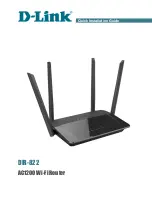
25
extra low voltage (24V~ ) use this voltage also for energising the valves
(terminals 2, 3 and 4), thus using 24V~ powered valves, in order not to
jeopardize the safety of the installation with unsafe voltages.
In case the thermostat is powered with 230V~ use 230V~valves.
In case of 230V~ mains power it is mandatory to respect Live and
Neutral indication.
At terminal 7 an input for remote heating/cooling selection is made
available. In case this function is not used, the same terminal input can be
used to activate the ‘Economy’ mode.
A remote temperature sensor can be wired to terminals 13 and 14.
The selection between internal or remote sensor is made through the
configuration procedure.
Terminals 12 and 14 feature a further input to which several types of
sensor can be wired in order to accomplish special functions: the user can
wire a supply water temperature sensor for performing the ‘changeover’
and/or ‘cu-toff thermostat’; as an alternative a bimetallic thermostat can
be wired here, still for a ‘cut-off thermostat’ function; further a window
contact can be wired.
Note: some limitations exist for the window contact: please read
carefully the ‘WARNING’ section.
The preferred sensor type can be set in the configuration menu.
The fan is controlled in a continuous proportional way. It is necessary to
connect a drive suitable to accept a 0..10V input signal and control the fan
motor at the output.
The proportional output of the fan at terminal 9 and the reference earth at
terminal 8 shall control the drive input, as shown in figure 5 and 6.
The input signal earth is often internally connected to the supply Neutral.
In this case, it is possible not to connect the terminal 8 (output signal
earth) because the earth is granted by the Neutral supply terminal (take
care this Neutral is connected to terminal 6).
Should the thermostat be supplied with 24V~ , such a low voltage may
be connected to the 230V~ Neutral through the motor drive. In this case,
you cannot consider the 24V~ as a very low safety voltage: hence, it will
be the installer’s duty to grant a proper insulation.
The device can control either one or two ON/OFF actuators, type NC or
NO. The heat output is at terminal 2. The cool output is at terminal 3. On a
2-pipe unit, just one valve is used both for heat and cool. In this case, the
control signal will be the heat signal at terminal 2.
Read carefully also the paragraph “WARNING”.
TECHNICAL FEATURES
Power supply:
230V~ -15% +10% 50Hz or
24V~ -15% +10% 50Hz
Power absorption:
1,2W
Room temperature
Regulation range:
5.0 .. 35.0 °C (configurable)
Sensor type:
NTC 4.7kΩ @ 25°C ±2%
Precision:
± 1.0 °C
Resolution:
0.1 °C
Display temp. range:
0.0 .. 40.0 °C
Supply pipe temperature
Sensor type:
NTC 4,7kΩ @ 25°C ±2%
Precision:
±
2
°C in the 20 .. 50 °C range
Resolution:
1
°C
Display temp. range:
0 .. 99 °C
Differential:
2
°C
ON/OFF actuator outputs
Contact capacity:
3A @ 250V~ cos
φ
=1
Proportional outputs
Signal range:
0..10 V
Signal precision:
±0.26 V
Minimum
actuator
impedance:
2,7
KOhm
Regulation
Proportional band:
0.8 .. 8.0 °C
ENGLISH
ESPAÑOL
DEUTSCH
ITALIANO
FRANÇAIS
Summary of Contents for WMT20
Page 8: ...8 Fig 8 2 BUUFOUJPO GPS 3 QJQF G 5BU ...
Page 9: ...9 Fig 9 ...
Page 10: ...10 Fig 10 ...








































